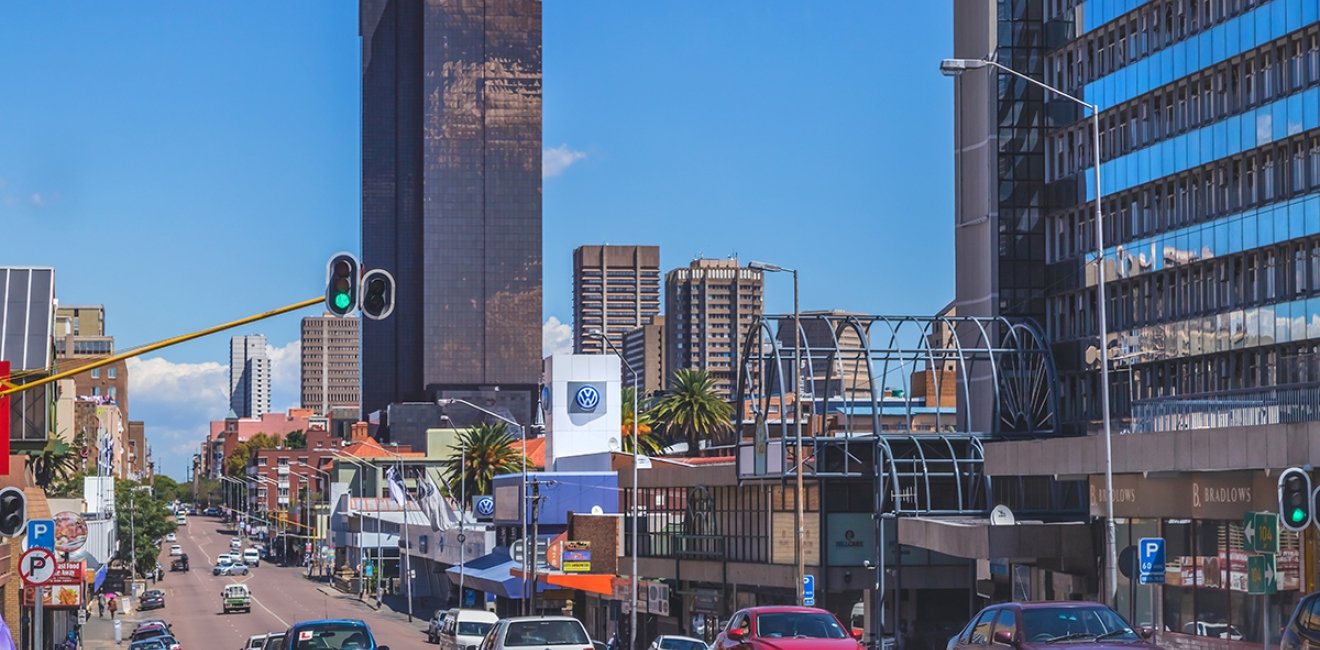Africa’s demographic growth and economic transformation have created an essential task in the continent’s public agenda: accelerating and scaling up infrastructure development. With 28 African countries doubling their population in the past 30 years, and predictions of 26 more African countries doubling their population in the next 30 years, investment in the region’s infrastructure has become obligatory. Additionally, increasing demand from Asia for natural resources and minerals is driving the need for port and rail infrastructure to move these commodities around the globe and to drive Africa’s economic growth. For example, demand for electricity will increase by 93% by 2035, around 47% of roads will need to be paved, ports must increase their average container handling performance from 20 to 25-30 moves per hour, and an additional 300 million people must have access to the Internet to keep up with the continent’s economic growth.
In the past, infrastructure investments have accounted for more than half the continent’s economic growth, increases in productivity, improvement in human development, and reduction of poverty, according to the African Development Bank, proving that infrastructure investments are necessary for Africa to sustain its growth. The World Bank argues that the poor state of African infrastructure constrains economic growth by 2 percent every year and cuts productivity by as much as 40 percent.
In the past, infrastructure investments have accounted for more than half the continent’s economic growth, increases in productivity, improvement in human development, and reduction of poverty, according to the African Development Bank, proving that infrastructure investments are necessary for Africa to sustain its growth.
This policy brief provides an overview and analysis of the current status and pathways forward to modernize Africa’s physical infrastructure, including transportation infrastructure (roads, railroads, ports, airports), and infrastructure for water, electricity, and telecommunications.
Africa has a vast infrastructure deficit, especially in the sub-Saharan region. When it comes to water and electricity specifically, there are significant disparities across the region. According to McKinsey, South Africa, Cameroon, Botswana, Nigeria, and Namibia have electrification rates that surpass 50% of the population. Sudan, Eritrea, Ethiopia, Angola, and Zambia’s electrification rates range between 35-49%. Mozambique, Zimbabwe, Madagascar, and Mauritania’s electrification rates range from 20-34%. Niger, Chad, the Central African Republic, and the Democratic Republic of Congo’s electrification rates are lower than 20%. While North Africa has almost reached universal access to electricity and water services, in sub-Saharan Africa, only about 45% of the population has access to electricity and around 60% of the population has access to water service. This means some 600 million people do not have access to electricity. The lack of electricity is more prominent in the rural areas, where electricity coverage is only around 28 percent, compared to a coverage of 65 percent in urban areas (African Development Bank).
Access to water has seen some improvement. Unfortunately, there is still a large disparity between urban and rural areas, with access to clean water at more than 90 percent in urban areas and only 67 percent in rural areas. The coverage is still low even when compared to other benchmarking regions such as Latin America, where around 55 of the rural population has access to clean water. Unsurprisingly, within the sub-Saharan region, countries with greater income per capita (like South Africa) tend to have greater access to clean water and electricity. On average, inadequate water and sanitation costs Africa around 5 percent of its GDP.
While transportation infrastructure varies greatly across countries, the general condition of its toll roads, railway lines, and ports is similar: obsolete and poorly maintained. The Infrastructure Consortium for Africa argues that the poor quality of the region’s roads, rail, and port infrastructure increases the costs of intra-African trade by some 30 to 40 percent.
When it comes to road density, South Africa is the best performing country in the region when compared to other African countries. However, when taken as a whole, only 47 percent of the roads in the African continent are paved, and less than 50 percent of the rural population has access to roads. This results in a lack of access for the rural population to basic services such as education, healthcare, transportation systems, as well as impeding their access to economic opportunities. The lack of quality in its road system also results in safety issues, with over 200,000 road accidents every year; accounting for around one-fifth of the world’s fatalities from road accidents.
Railroad systems in Africa are typically outdated and ineffective, partly as a result of limited maintenance. In total, the region has over 84,000 kilometers of rail track – most of which is concentrated in countries with higher income per capita, such as South Africa, Namibia, and Botswana – for an area of about 30 million square kilometers,. Ports are no different – poorly equipped and badly operated ports experience delays in shipment handling, long processing times, and handling costs. African ports are 50 percent more expensive than in other parts of the world, according to the African Development Bank. Additional challenges to ports stem from the lack of integrated systems of road and rail lines linked to ports. For example, cargo ships in Nigeria – one of Africa’s largest economies – take as much as a month offshore before being able to unload in Lagos. For this reason, the Nigerian government has teamed up with Singapore-based Tolaram, Nigeria’s biggest food company, state-owned China Harbour Engineering, and French logistics giant CMA CGM, to build a state-of-the-art, $1.2 billion deep-sea port that will have double the capacity of the country’s existing ports and will end maritime congestion. These investments are intended to aid Nigeria in its struggle with inflation, economic stagnation, and decreased foreign investment.
Surprisingly, the infrastructure for information and communication technology has seen tremendous growth. According to the African Development Bank, Africa is now the second largest mobile phone market in the world, and the fastest growing market, with around 8 in 10 Africans having a mobile phone. Broadband coverage is still low, with less than one third of the population having access. In fact, 21 out of the least-connected countries in the world are African. This is not surprising, given that only around 11 percent of households have a computer. This digital divide has unfortunately impacted the economically disadvantaged population the most. The need for accelerated digital innovation in Africa has been accelerated by the COVID-19 pandemic, which increased the need for more digital infrastructure that allows for remote working and online education.
Surprisingly, the infrastructure for information and communication technology has seen tremendous growth. According to the African Development Bank, Africa is now the second largest mobile phone market in the world, and the fastest growing market, with around 8 in 10 Africans having a mobile phone.
How much is the infrastructure gap in Africa worth? According to the African Development Bank, the continent needs up to $170 billion per year by 2025 to overhaul its infrastructure, with two-thirds of that being needed for entirely new infrastructure and the remaining one-third for maintenance.
Africa’s digital transformation is another monumental task. According to the World Bank, achieving universal Internet across Africa requires investments of $100 billion in infrastructure such as 4G stations, and at least 250,000 kilometers of fiber needed to establish and maintain broadband networks. There are ongoing initiatives associated with the African digital economy, for example, the EU-AU Digital4Development hub is a partnership intended to create universal digital access in Africa by 2030. The initiative has begun its implementation in five African countries: Mozambique, Burkina Faso, Uganda, Tunisia, and Morocco.
How can Africa tackle the infrastructure gap? One of the continent’s main challenges to developing infrastructure investments is the fact that many African governments are faced with rising debt-to-GDP ratios, which will limit sovereign spending on infrastructure in the coming years. The countries with the highest debt-to-GDP ratios in the region include Eritrea (175%), Cabo Verde (160%), Mozambique (133%), Angola (103%), Mauritius (101%), Zambia (101%), Republic of Congo (85%), and Ghana (83%). A prominent example is sub-Saharan Africa, which a debt-to-GDP ratio of over 50 percent in 2020. Thus, funding is a key challenge for infrastructure projects, which have typically been financed by African governments and constrained by budgetary restrictions. Local banks and financial institutions are not able fund these projects fully, creating the need to diversify sources of funding and boosting public-private partnerships (PPPs). Five African countries accounted for more than 50 percent of all successful PPP activity from 2008 to 2018: South Africa, Morocco, Nigeria, Egypt, and Ghana. Several other countries have multiple PPPs underway. Burkina Faso has 20, and Botswana, 8.
Luckily, funding opportunities are on the horizon. Investors, including government agencies, private sector pension funds, and investment companies from the United States, China, the United Kingdom, and the United Arab Emirates have shown considerable interest in African infrastructure projects. Estimates are that such investors have as much as $550 billion in assets under management. Close attention must be given to China, whose investments in Africa have grown steadily at an average annual rate of 10 percent from 2013 to 2017, according to the Infrastructure Consortium of Africa (ICA). For example, as part of China’s Belt and Road initiative, over 90 percent of Kenya’s Mombasa-Nairobi Standard Gauge Railway was financed by China’s EXIM Bank. Additionally, China’s Belt and Road Initiative is set to finance ports, roads, and other infrastructure around the globe. China has become and will continue to be a big spender in Africa. According to the Center for Global Development, a think tank in Washington, between 2007 and 2020 Chinese development banks provided $23 billion for African infrastructure, compared with $9.1 billion from all other development banks.
Unfortunately, structural issues create additional obstacles for infrastructure modernization in Africa. While the volume of current African infrastructure projects expected to be completed by 2025 surpasses $2.5 billion, most of these projects do not come to fruition. An investigation of multiple infrastructure projects in Africa by McKinsey revealed that the completion of infrastructure projects in the region remains low due to several causes at the early stages of project development, including limited pipeline of deals or selection of low-impact projects; weak feasibility studies and business plans; delays in obtaining licenses, approvals, and permits; inability to agree on risk allocations; inability to secure offtake agreements and guarantees; and poor program delivery. This investigation found that 10 percent of all infrastructure projects are successfully realized, with over 80 percent of infrastructure projects failing to survive the feasibility and planning stage, and only 50 percent of those achieving financial close.
How can Africa move forward? African governments must take action to increase the viability of projects by focusing on the mitigation of political, currency, and regulatory risks. For example, the governments of Senegal and Zambia, supported by the International Finance Corporation (IFC), have agreed to manage risks and issues related to land, currency, and politics for their solar energy projects. As a result, Zambia’s and Senegal’s projects for the construction of solar power plants have received over 20 bids from international investors.
Infrastructure development in the African continent has been shown to be and will continue to be a catalyst for progress. Fulfilling the demands of a billion more Africans requires increased access to adequate infrastructure, which is currently lacking, particularly in sub-Saharan Africa. South Africa alone will have an infrastructure investment gap of $293 billion by 2030. The key challenge for the continent is to ensure its growing population has access to reliable services like electricity, water, Internet, and efficient transportation systems. Ensuring adequate funding for infrastructure is another critical step; this will require African governments to demonstrate long-term policy stability and the institutional capacity to guarantee investors that projects will achieve completion. In doing so, Africa will ensure sustainable economic growth through intra-African and international trade, and increase the well-being to its burgeoning population through access to primary services.
Author

Professor of International Business and Executive Director for the Americas, College of Business, Florida International University

Wahba Institute for Strategic Competition
The Wahba Institute for Strategic Competition works to shape conversations and inspire meaningful action to strengthen technology, trade, infrastructure, and energy as part of American economic and global leadership that benefits the nation and the world. Read more

Explore More
Browse Insights & Analysis
La esencia de la infraestructura global: perspectivas del líder de la industria Matt Harris

The Innovative Landscape of African Sovereign Wealth Funds




